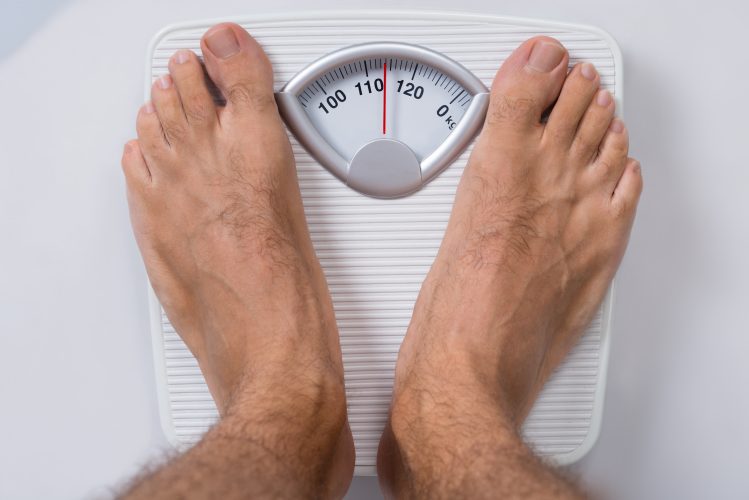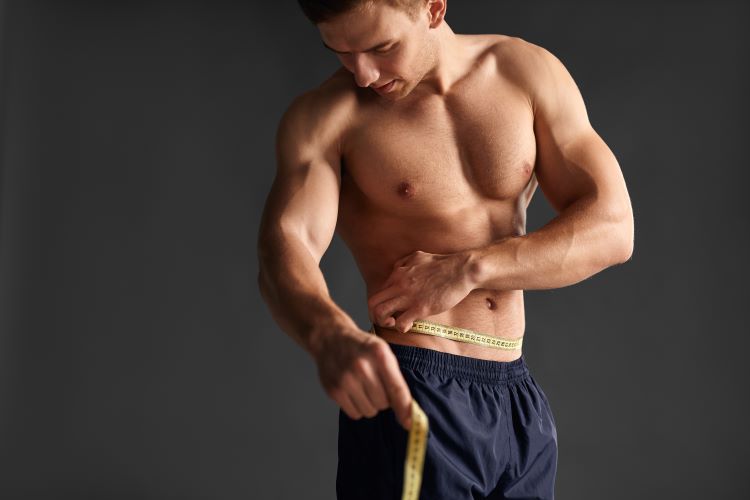Keen to get fit and healthy this summer? Weight loss vs fat loss are two very different fitness goals, so it’s importance to understand which is right for you.
With spring and summer drawing closer, you might feel motivated to dust off your best exercise mat and kickstart a new health or fitness journey. When looking to get fitter, people often automatically focus on trying to shift a little weight. After all, when it comes to weight loss vs fat loss, aren’t they the same thing?
You’d think so, but there’s an important difference to consider when understanding weight loss vs fat loss. Knowing this is key, not just to lasting fitness, but to long-term health. And putting this knowledge into action will pay dividends long after we smash our initial goals.
The problem with weight loss
That number when you step on the scales – your body weight – represents the sum of your body components (including muscle, fat, water and organs). When that number goes down and you lose weight, it is not a pure reduction in the amount of fat stored in your body, and that’s what you really want to achieve.
Decreasing the percentage of your overall body fat from 25% to 20% is a much bigger win that trimming your weight from 200lb (90.7kg) to 180lb (81.6kg), if only a fraction of that loss is from fat.
Consuming fewer calories will naturally lead to weight loss. But combined with improper training, too much weight loss can result in decreased strength and fitness, poor sporting/athletic performance, and even early ageing and reduced immunity.
Aim for fat loss
For most healthy men in reasonable physical condition, fat loss is the healthier goal to aim for. In fact, most men who work out regularly want to reduce body fat. But if they’re strength training, their muscles will grow and they well end up gaining weight. Weight gain and fat loss can occur at the same time – indeed that is the desirable outcome for many men.
Unless you’re an endurance athlete (in which case weight can impact performance) or genuinely overweight/obese, your weight on the scales can be largely ignored. If you’re only concerned with seeing a smaller number, the likelihood is that you will end up losing valuable muscle.

Likewise, if you lose weight because you’re dehydrated, you’ve only lost water, and those pounds will come right back. You still have just as much fat on your body as before. Water keeps your muscles plump and vital. If you’re not drinking enough water while working out, your muscles will shrink, leaving you lighter but without any energy or strength.
Body fat testing
There are a number of ways to determine whether you’re losing weight or fat. Performing a body fat test using skinfold calipers is the easiest and most reliable way. (Getting a trained professional to do this will yield more accurate results.)
If you weigh 200lb, with 30% fat, you’re carrying around more than 60lb of fat. Ideally, a healthy 30-year-old man man will have around 15-20% fat, or between 30-40lb pounds. So, a loss of at least 20lb of fat would be required to reach a healthier level. If you lost 20lb in total, but only 10lb of it came from fat stores, you would still be at a less-than-healthy 27% fat. To reach the 20% body fat level, most of that 20lb must come from fat – that’s the key to understanding weight loss vs fat loss.
Gain muscle to burn fat
When losing weight, the way to lose just fat is by adding strength training into your fitness program. Don’t try to lose weight simply by performing cardio. The pounds you lose will come right back if you stop the cardio, without muscle mass to keep the weight off. Don’t worry about bulking up or gaining too much muscle. For most of us it’s not a concern. When you add muscle, you improve your body fat composition ratio, which is the main goal.
A simple regime for losing fat looks something this: regular strength training sessions 2-4 times a week, metabolic training 1-3 times a week, with a good amount of sleep, as well as rest and recovery periods.
A nutritional plan to complement that would include eating in a slight caloric deficit, with proteins, carbs and fats for every meal. Nutritionist Milda Zolubaite says, “Aim for around 30% carbohydrates, 40% fats and 20% protein, but don’t be tempted to skimp on the quality of foods you’re having, as quality is key.”
Go green to get lean
She adds, “Aim for around half of your plate for lunches and dinners to be vegetables and salads, add a quarter plate of protein and quarter plate of complex carbohydrates, and add a good source of beneficial fats like olive oil, nuts and seeds, avocado and oily fish.
“It may be tempting to track your calories in order to go into a big calorie deficit to lose body fat. However, if calorie restriction is too quick, the thyroid, which is responsible for metabolism, may struggle. So aim to focus on quality, balance and don’t forget to enjoy the food you’re eating.”
Of course, losing weight other than fat is unavoidable. But losing muscle mass will cause a rebound effect that leads to weight gain. Muscle helps speed up your metabolism and helps calories. Even when you’re sitting on the couch, you burn more calories if you have more muscle mass on your frame.
To look like a fit, healthy person, losing fat and having muscle is necessary. Hit the weights and nail your nutrition and you’ll find it easier to stay at your target weight and your ideal body fat percentage.






